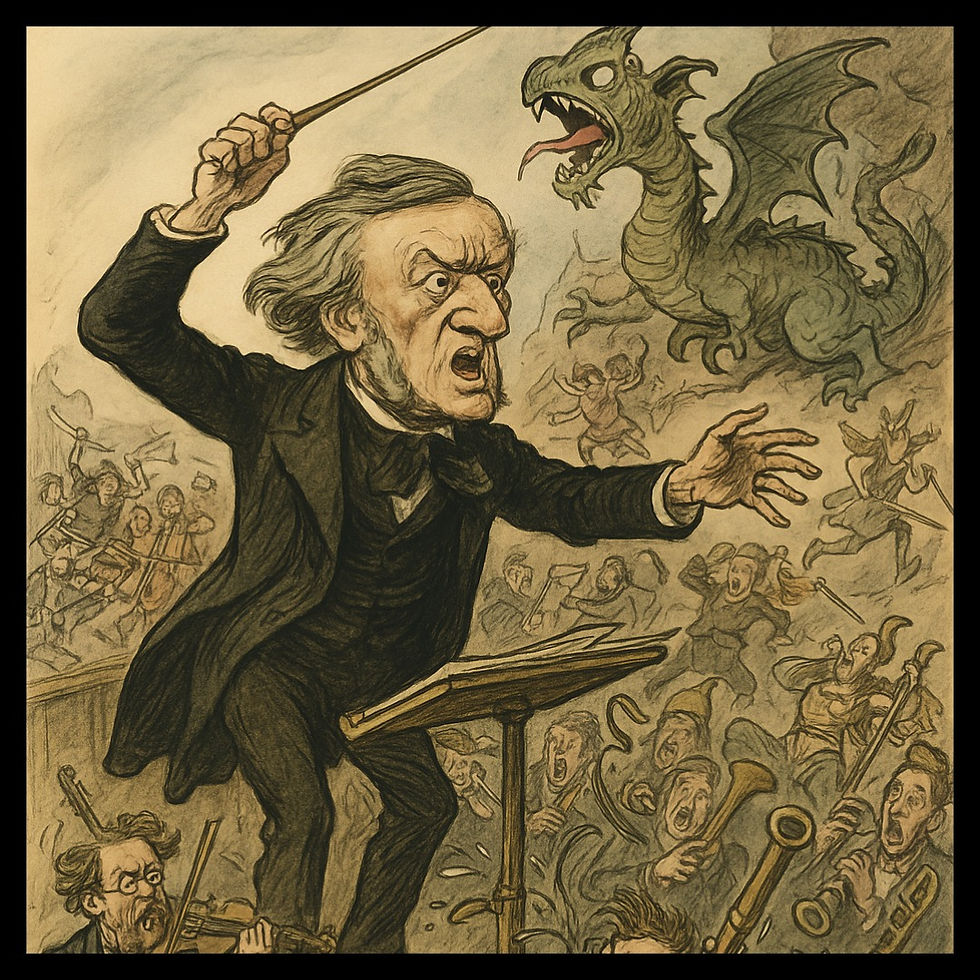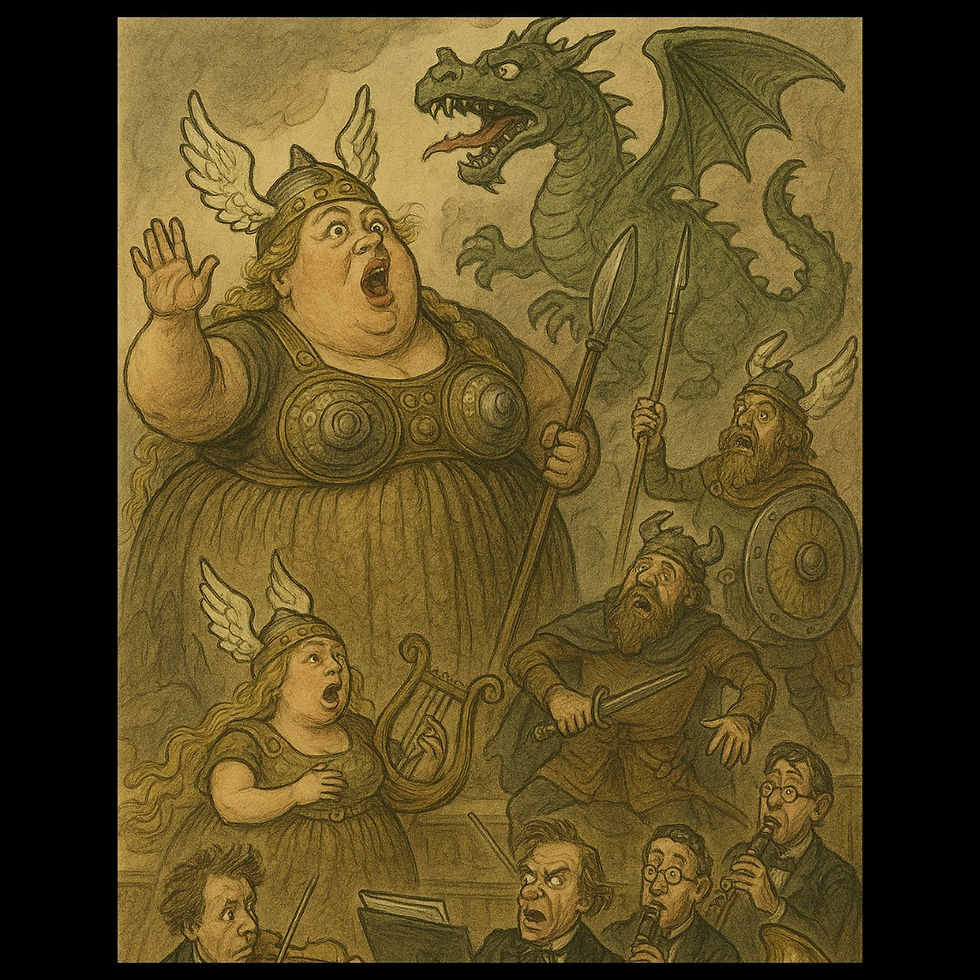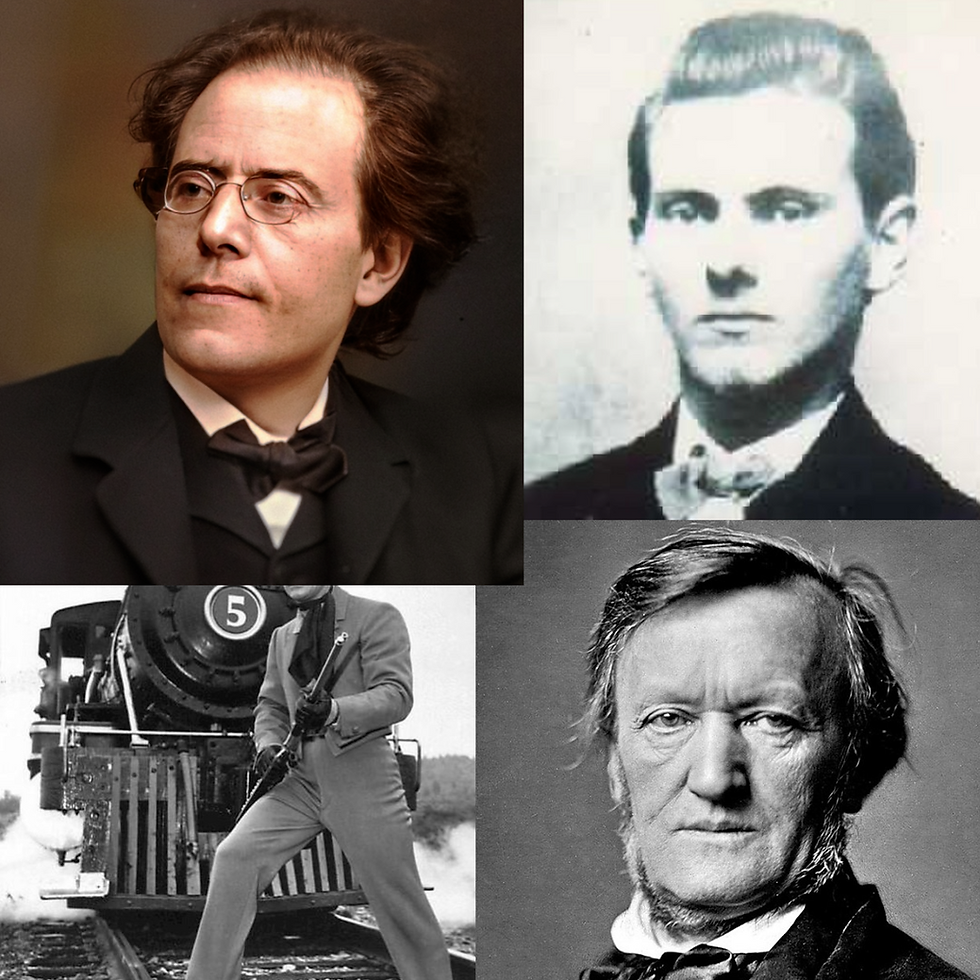The first "Wag-nathon" - August 13, 1876
- Aug 13
- 4 min read
August 13, 1876 marks the first complete performance of Richard Wagner's epic Ring of the Nibelung. Love him or loathe him, there’s no denying that Wagner’s music has shaped the landscape of classical music like few others. His sweeping melodies, powerful orchestration, and bold innovations continue to spark passion and debate among audiences and musicians alike. This season, the Naples Community Orchestra invites you to experience the drama and grandeur of Wagner firsthand, as we showcase two of his iconic works in February - Prelude to Act 1 of Die Meistersinger von Nürnberg and March - Overture to Tannhäuser. Join us as we celebrate and explore the enduring legacy of this remarkable—and often controversial—composer. |

Staged in Wagner’s brand-new Bayreuth Festspielhaus, the four-opera cycle - Das Rheingold, Die Walküre, Siegfried, and Götterdämmerung - unfolded over six days before an audience that included Emperor Wilhelm I, King Ludwig II of Bavaria, and composers Franz Liszt, Edvard Grieg, Pyotr Ilyich Tchaikovsky and Camille Saint-Saëns (no pressure!) It was an event to be remembered.
Wagner had dreamed of this epic for nearly three decades, composing the music between 1853 and 1874. The Bayreuth theater itself was revolutionary, with a hidden orchestra pit and a fan-shaped auditorium designed to focus the listener entirely on the stage. The work was hailed by some as the most extraordinary theatrical event of the century — and by others as “magnificent and monstrous.” Whether or not they loved it, everyone agreed: nothing like it had ever been attempted before.

Wagner's Bayreuth Festspielhaus is uniquely designed with a floor plan centered around a steeply rising, single-tier auditorium known as continental seating all with an unobstructed view of the stage. Constructed primarily of wood, the hall achieves exceptional acoustics with a reverberation time of about 1.55 seconds. The deeply recessed and covered orchestra pit beneath the stage is hidden from audience view to create a "mystic gulf" that focuses attention on the drama rather than the orchestra.

Wagner's Bayreuth Festspielhaus is uniquely designed with a floor plan centered around a steeply rising, single-tier auditorium known as continental seating all with an unobstructed view of the stage. Constructed primarily of wood, the hall achieves exceptional acoustics with a reverberation time of about 1.55 seconds. The deeply recessed and covered orchestra pit beneath the stage is hidden from audience view to create a "mystic gulf" that focuses attention on the drama rather than the orchestra.
It ain't over until....
|

Behind the Scenes at the First Full Ring CycleOf course, no premier this ambitious escapes without a few backstage disasters! Here are just a few examples. |
1. The Stage Was Too Small for Wagner’s Ambitions
Wagner imagined vast rivers, enchanted forests, dragon lairs, and a fiery mountain top — all in a theater that had just been built and was still smelling of fresh wood.
The “Rhine” in Das Rheingold was literally a tank of water with dancers suspended on harnesses, waving their arms in undulating patterns. The harnesses squeaked so loudly during rehearsal that Wagner exploded in fury, shouting, “It must be silent as the grave — or you’ll ruin the illusion!”
The harness squeaks were never fully solved, but they were drowned out by the orchestra. (editor: Thank goodness for trombones!)
2. The First Dragon Was… Underwhelming
In Siegfried, the dragon, Fafner, was meant to terrify the audience. Wagner’s set crew constructed a massive mechanical dragon with flapping wings and rolling eyes.
On opening night, the dragon refused to open its mouth for the “battle” scene, leaving the tenor to stab at what looked like a very large, sleepy sausage.
Tchaikovsky, who attended, reportedly chuckled and wrote that the dragon was “a very poor specimen.”
3. Orchestra Pains
Wagner had an enormous orchestra — over 100 musicians — crammed into the new sunken pit.
Because the pit was enclosed, the temperature skyrocketed. Musicians complained of “steam-bath” conditions and had to wring sweat from their collars during breaks.
One horn player passed out during Die Walküre, and the part was played from backstage by a substitute who sight-read it.
4. Wagner’s Obsessive Rehearsals
Rehearsals lasted ten hours a day for weeks. Wagner was notorious for stopping after a single wrong note.
He once halted Siegfried because a bird-call in the forest scene “sounded too German” and ordered it to be “more Italian.”
Singers often left in tears; Wagner’s wife Cosima noted in her diary that the rehearsals “destroyed the health” of several cast members.
5. The Emperor Walkout
During Götterdämmerung, Emperor Wilhelm I left before the finale, citing “a pressing engagement.”
Wagner took it personally and grumbled for days, convinced the Emperor “didn’t understand art.”
6. Mixed First Impressions
Some critics hailed it as the most extraordinary theatrical event of the century. Others found it bewildering — The Times of London called it “magnificent and monstrous.”
The financial cost was crushing; Wagner lost money on the festival and wouldn’t attempt another Ring at Bayreuth until 1896 (long after his death).
The Naples Community Orchestra proudly presents our 2026 Season:
Tickets are now on sale for our 2026 Season. Buy a Season Pass to all 4 concerts and save!
Great music. Good fun. The NCO Experience!




Comments